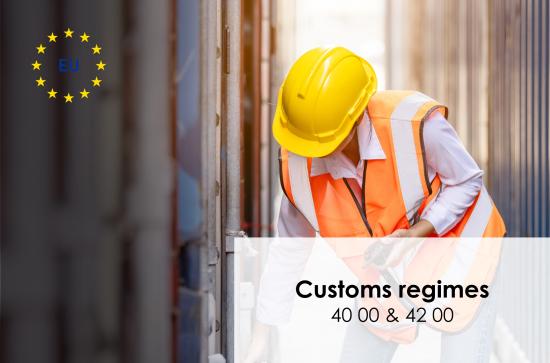Companies engaged in international trade are subject to various customs regimes that determine the legal status of goods before their arrival in a specific territory, while establishing a regulatory framework for the movement of these goods. Among the customs regimes are the 40 00 regime, also known as the classic import regime for release for free circulation, and the 42 00 regime. In this article, we will examine these two regimes and their implications for businesses engaged in trade within the European Union.

Definitions: Intrastat declaration, customs regimes 40 00 and 42 00
Regime 40: Release for consumption with simultaneous release for free circulation of goods not subject to VAT-exempt delivery.
Regime 42: Release for consumption with simultaneous release for free circulation of goods with VAT exemption for delivery to another member state.
The 40 00 regime is used when goods are imported into a member country of the European Union from a third country. Establishing a customs declaration for release for consumption under the 40 00 customs regime enables the payment of customs duties, other taxes, and self-assessment of VAT by the final purchaser of the goods through the indication of their VAT number. Once the goods have been cleared through customs, they can be consumed within the European Union (EU) without being subject to additional customs restrictions. Companies importing goods under the 40 00 regime must pay customs duties and VAT in the importing country.
The 42 00 regime applies when goods are imported from a non-EU country into an EU member state. The goods are subject to customs duties with VAT exemption in the importing country, but the company must complete the Monthly Statistical Survey on Intra-Community Trade in Goods and the VAT Tax Recapitulative Statement. The final recipient must have a VAT number in their country of consumption within the EU. To benefit from VAT exemption under the 42 regime, the intracommunity delivery must take place immediately after the importation of the goods. This means that there should be no delay between importation and intracommunity delivery, except for the time required for the transshipment of goods.
Who can be a one-time tax representative?
Companies located outside the European Union can also use the 42 customs regime when they import goods for buyers established in a member state other than the point of entry of the goods into the EU. In this case, VAT is self-assessed by buyers in their own country. However, these companies can appoint a one-time tax representative who will be responsible for their VAT tax obligations.
MORE INFORMATION?
SEKO BANSARD offers its foreign clients, who are not registered with the Commercial Register of an EU member country, a tax representation service (Customs and Taxation | Bansard International) to manage all customs formalities and taxes related to the importation of their products into the EU market.
+ Sources
Mise à la consommation | Portail de la Direction Générale des Douanes et Droits Indirects



